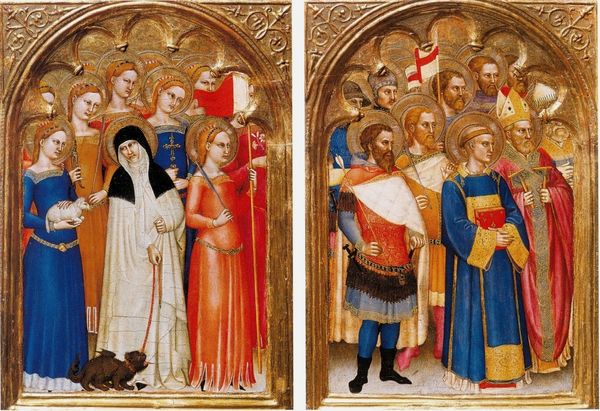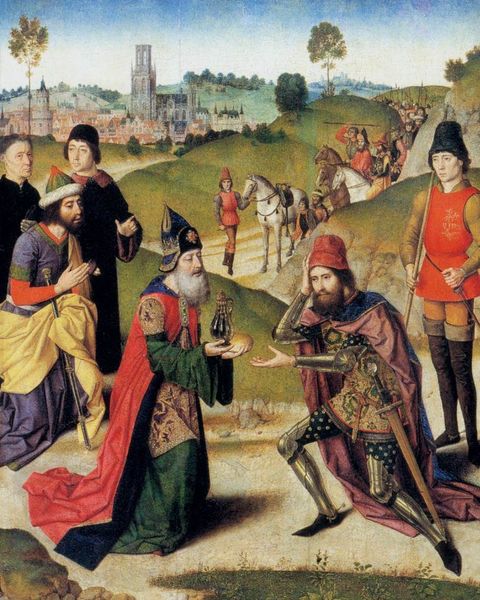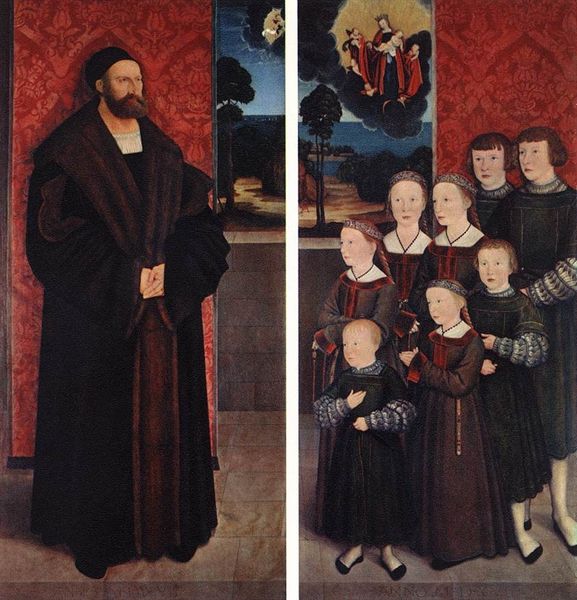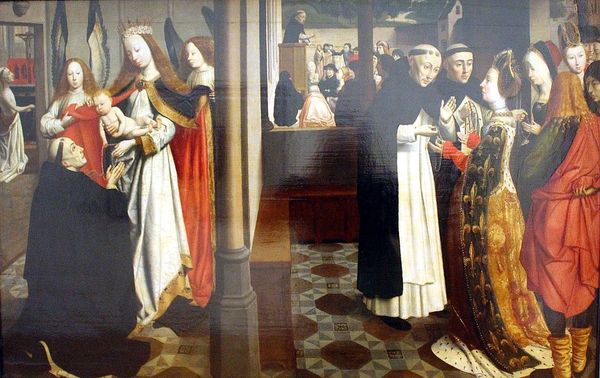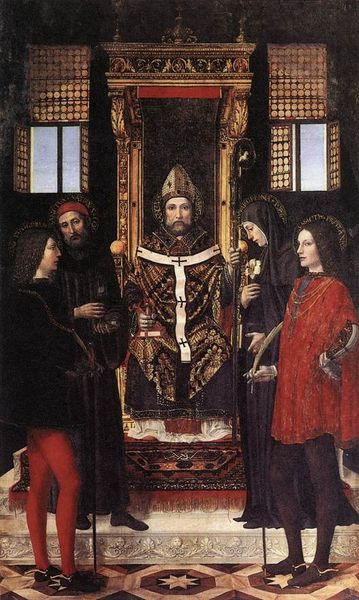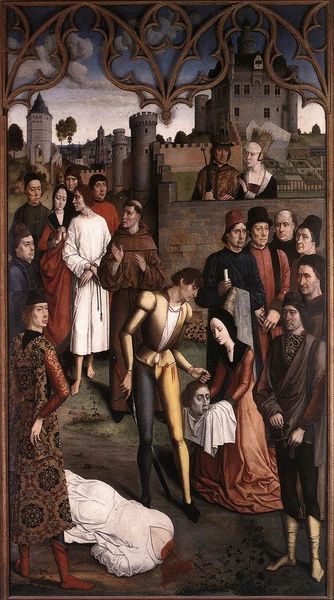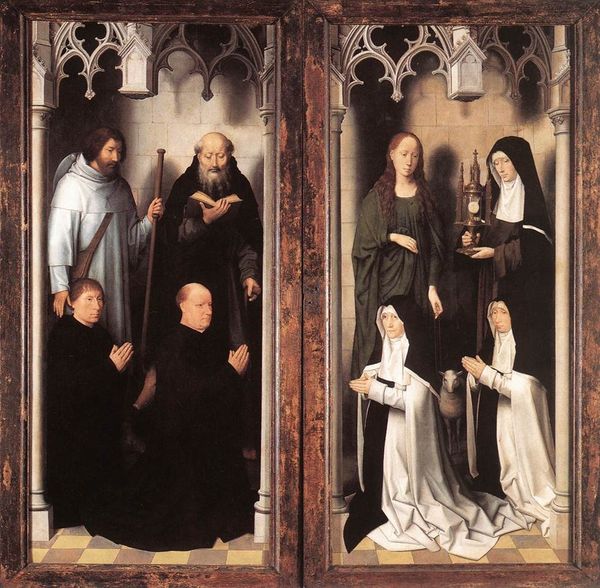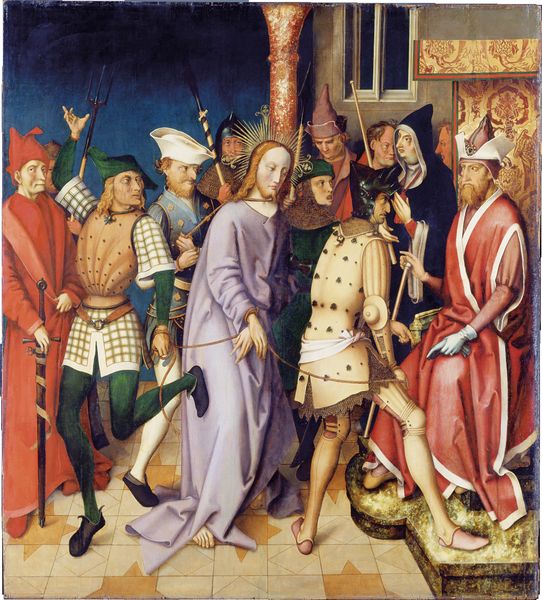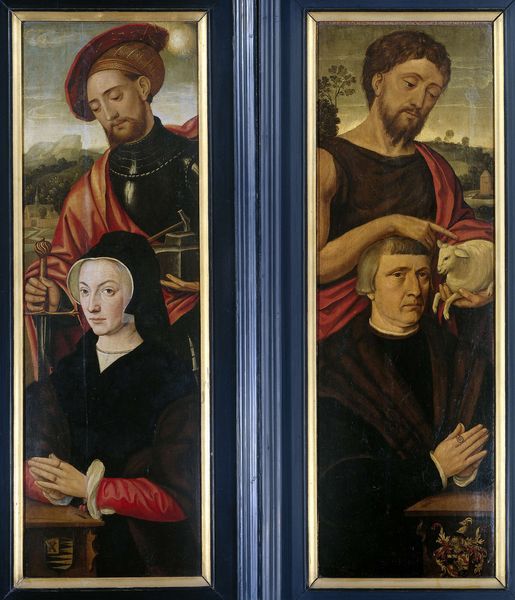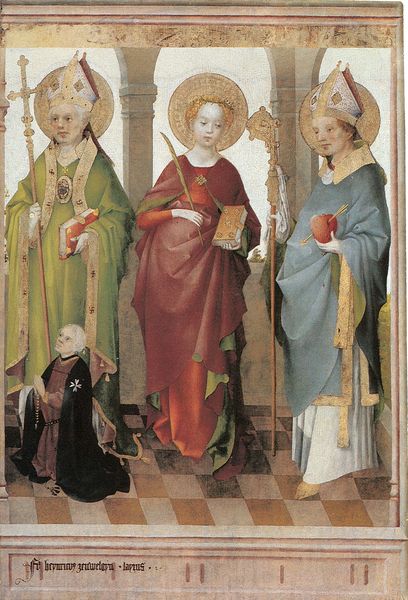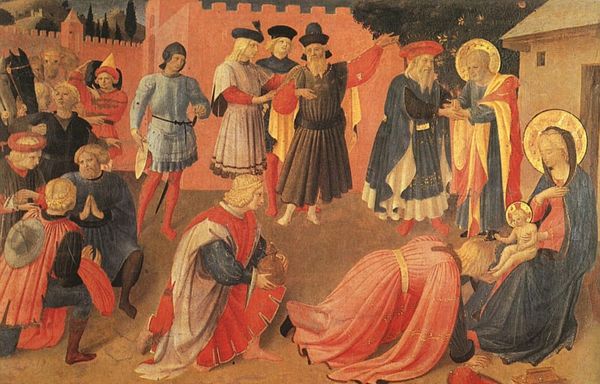
panel, tempera, painting
#
portrait
#
medieval
#
panel
#
narrative-art
#
tempera
#
painting
#
figuration
#
group-portraits
#
history-painting
#
international-gothic
#
academic-art
#
mixed media
Copyright: Public domain
Curator: Here we have the “S. Vicente Panels,” attributed to Nuno Gonçalves, painted around 1480. This large, multi-panel tempera on wood is quite a remarkable example of late International Gothic style, currently housed here at the National Museum of Ancient Art in Lisbon. Editor: Immediately, the sheer scale strikes me. And the density of figures, each rendered with such specific detail in their faces and clothing… there’s a very sober, almost grave, mood about the assembly. It definitely gives me the impression of a solemn gathering. Curator: Indeed. Scholars have long debated the precise identities and meaning within these panels. The artist appears to be documenting Portuguese society through an incredible number of individual portraits all together, perhaps conveying a national identity. The careful depictions of garments tell a powerful story of craft and commerce from the period. We are clearly in the presence of power through materials and sheer volume. Editor: Absolutely. One cannot ignore how this artwork participates in the consolidation of Portugal as a nation-state. The assembly presents such a strong image, visually bringing together clergy, nobility, and commoners all looking towards some central…ideal. What role would you say such images played within the culture of the time? Curator: Surely to cement not only the power but the perception of authority. It is difficult for us today to imagine a pre-photographic society and the potency of hand made imagery and objects that communicate specific ideals and hierarchies. Think of all the materials and labor required! To procure these materials— pigments, the wood panels themselves, not to mention the hours and hands needed for their preparation—it becomes clear what resources the commission of such a project needed to create. It presents power not merely symbolically but materially. Editor: Very true. And to think of the space the complete work originally occupied! Likely a place of significance, a chapel or important civic space designed to emphasize a very particular social and political view. The art shaped that social discourse and, in return, was shaped by it, influencing and being influenced in a dance of national consciousness. Curator: A vital visual representation of power and process during the era indeed, not just for patrons but everyone who saw this assembled painting on these panels. Editor: An incredibly potent statement about societal norms and national aspiration visualized to such spectacular degree, it cannot be overlooked.
Comments
No comments
Be the first to comment and join the conversation on the ultimate creative platform.
